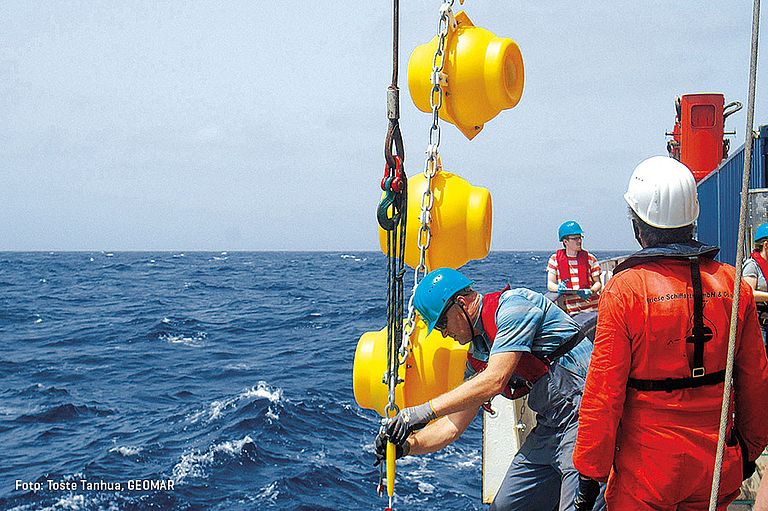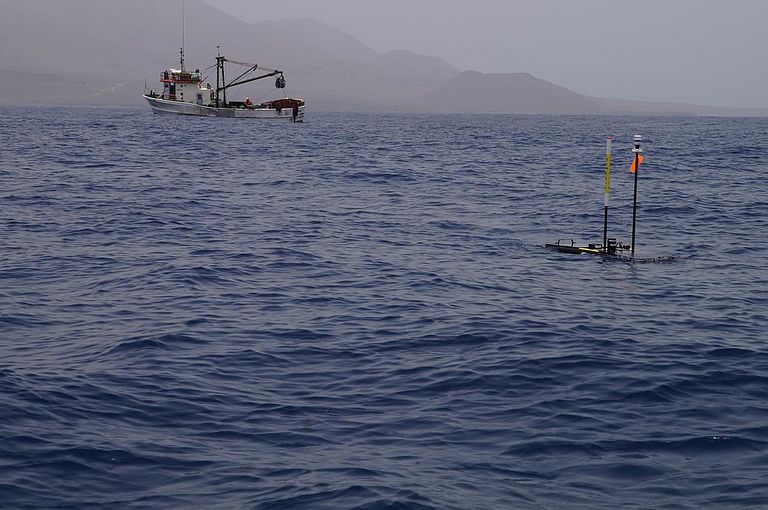Image of the month: May 2018
Working at the Cape Verde Ocean Observatory
Our image of the month shows scientists and crew members of RV METEOR working at the Cape Verde Ocean Observatory (CVOO). 60 nautical miles north of the island of São Vicente, at 3600 meters of water depth, a wire to which numerous measuring instruments are attached is moored at the seafloor with heavy anchor weights. Buoys provide sufficient buoyancy to keep the mooring upright, allowing the instruments to record data such as temperatures, salinity, currents or even oxygen levels in different layers of the ocean. About every 1.5 years, researchers recover the entire mooring to obtain the data, to maintain the equipment and to remove biofouling. Since the wire is more than three and a half kilometers long, large research vessels such as the German RV METEOR are necessary for this work.
In addition to continuous measurements conducted by the mooring, scientists from Germany and from Cape Verde repeatedly collect data at the position of the CVOO on the dynamics of seawater, on temperatures, on chemical trace substances in the water or on gas exchange between ocean and atmosphere. Smaller research vessels such as the Cape Verdean RV ISLANDIA or even autonomous devices such as Wavegliders or oceanographic gliders can be used for these samplings.
Onshore on the island of São Vicente, the Leibniz Institute for Tropospheric Research Leipzig, together with international partners, operates the Cape Verde Atmospheric Observatory (CVAO). Together, these two observatories give scientists a unique insight into processes in the tropical ocean and the atmosphere above - and above all into interactions between these two. More information about the CVAO will follow in August ...
Links:
www.cvoo.de The website of the Cape Verde Ocean Observatory





